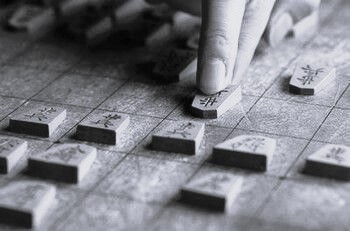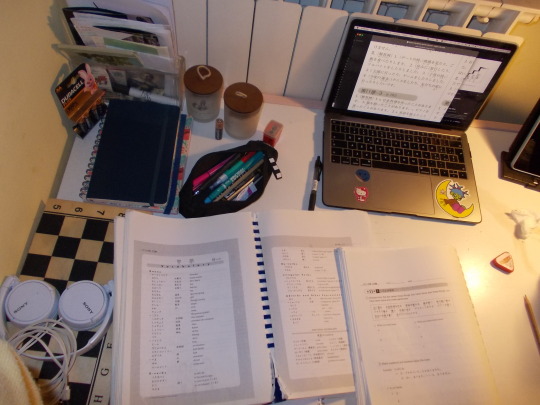#japanese chess
Note
Wondering - have you seen garment designs with go (the game)? Or any board game, we're not picky. we thought they'd be more popular since they're geometric. i think we've seen more of the shell game, but that seems more like the fans patterns - like lots of little pictures, and not really centered on the game.
Hi! Kaiawase (shell matching game) is part of the traditional court patterns, hinting at classical Heian noble culture with its Tale of Genji miniature paintings. This game has auspicious underlyings hence why it found its way on many kimono and obi!
As a pattern, strategy games are more a secular motif. Go was already already popular among government officers during Nara era, but of what I know it is mostly linked to warrior culture. Same goes for shôgi.
You can find here and there garments patterned with board games, especially men items such as juban or haori linings.
Go patterns are tbh super hard to find on the net - many are mislabeled circles/round motifs (maybe because they look like goishi/go stones?). But go patterns do exist I am certain of that! (sources 1)

Shogi is easier to recognize as its mostly depicted through shôgikoma/tiles though you can also sometimes find shôgiban/boards (sources 1 / 2 / 3 / 4):
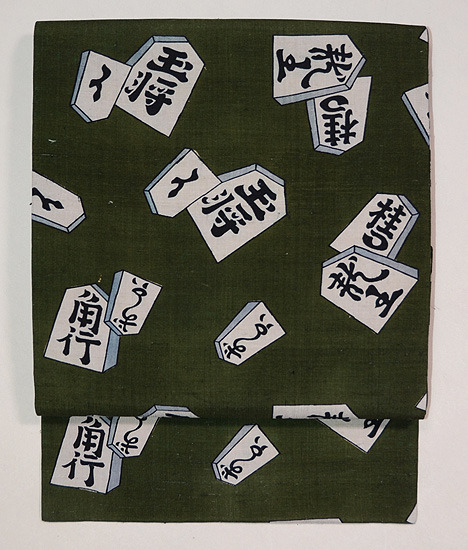



#ask#japanese patterns#board game#history#fashion history#go game#goishi#shogi#shougi#japanese chess#shogi koma#shogi tile#Kaiawase#shell matching game
70 notes
·
View notes
Text
Chess Blog Day #38 - Chess and Its Family
Although there still remains some debate on whether chess originated in India or Persia, most historians believe chess to have originated in India.
The common ancestor of chess-like games would then be Chaturanga.
"Chaturanga" literally means "four divisions". The four divisions were infantry, cavalry, elephants and chariotry. These would later become the modern pawn, knight, bishop and rook.
Chaturanga was played on an 8x8 board but this board wasn't checkered like a chessboard.
Chaturanga was probably the earliest game to have two things that chess has that other board games like Go don't: Different pieces with different powers, and a single piece that the game centres around trapping (a "king").
Chaturanga was then introduced to Persia (modern Iran) and became Chatrang, which was eventually given the Arabic name Shatranj.
In Chaturanga the king could be captured. Persian players must have decided that this was no fun because at some point in the 700s the rules of Shatranj were changed so that you couldn't put yourself in check and had to move out of it.
Shatranj had the king, knight and rook equivalents move the way they do to this day; but the pawn, queen and bishop equivalents were much less powerful.
This didn't entirely solve the problem of instantly losing games via a silly mistake though, as any online blitz player will attest. Oh well.
Players also had to announce "shāh" (meaning "king", the origin of the modern "check") when they attacked their opponent's king. And of course they also had to declare "Shāh Māt!" ("the king is dead!"), the origin of the modern checkmate.
Later on they started to engrave half of the squares and the iconic checkerboard came into play.
Shatranj sets are typically more minimalist than Chaturanga sets, likely because of the Muslim ban on idolatry that we mentioned yesterday.
Here's a Chaturanga set (left) compared to a Shatranj set.

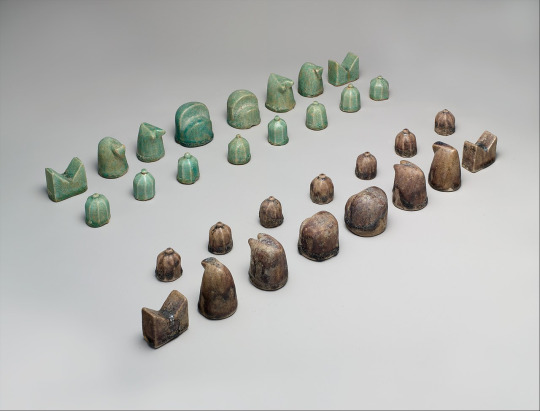
Before we continue down the descent of chess, we need to take a look at its cousins.
Chinese chess, xiangqi, is thought to be derived from Chaturanga. There are some niche historical theories that it was the other way around, but these aren't well supported. It has the two properties of a chess-like game that we mentioned before - a "king" and pieces with different moves. Xiangqi doesn't have squares though. Pieces are placed on intersections like in Go.

Shogi, or Japanese chess, is also thought to be derived from Chaturanga and may have been invented in India. Some historians even believe that it was originally played with 3D Chaturanga pieces and not the 2D set that it is today. Shogi has the interesting property of being able to use your opponent's pieces after you capture them, reflected in the western variant of bughouse chess.
One theory is that this rule was added at a time in Japanese history when there were a lot of mercenary fighters switching loyalties.

Makruk, or Thai chess, is another Chaturanga derivative. It's actually much more similar to Chaturanga than Chinese or Japanese chess, and is probably the closest thing to Chaturanga still played today aside from chess itself.

In fact Chaturanga derivatives spread so far east that they reached what is now the USA, as chess-like pieces have been found belonging to the Tlingit people of Alaska.
Back to chess.
Eventually Shatranj was introduced to Europe and became associated with violence, revelry and gambling (I know). The historical cultural impact of chess could be its own blog post.
Eventually chess became more prestigious and associated with knights and royalty, who played with ornate pieces. Christian cultures didn't have the same issues with idolatry at that point in history and began making the sort of elaborate sets we saw yesterday.
At this point the rules hadn't really changed from Shatranj.
There were a couple of early European rule changes though. Pawns were allowed to move two squares on their first move and en passant was added to balance this out. King and queens could jump on their first move (queens were still weak and king jumping eventually became castling).
People also experimented with the idea of setting up the pieces behind the pawns however they wanted, although this never caught on.
Then around 1500 AD the Spanish came along and decided that chess was just too slow. They decided that bishops and queens should have the move ability that they do today.
This was initially called "Mad Queen Chess" or "Chess with the madwoman".
This update spread like wildfire though because clearly everyone found it led to much more action.
Finally in the 1800s the modern rule around stalemate was added, castling was standardised, and all later rule changes like threefold repetition were more technical in nature.
We talked a little bit about the rule changes over history, but some of them are quite interesting so it's worth looking into them in more detail.
Tomorrow: The rules of chess's ancestors.
#chess#board game#history#chaturanga#shatranj#chatrang#xiangqi#shogi#makruk#japanese chess#chinese chess#thai chess#tlingit#mad queen chess#en passant
2 notes
·
View notes
Photo
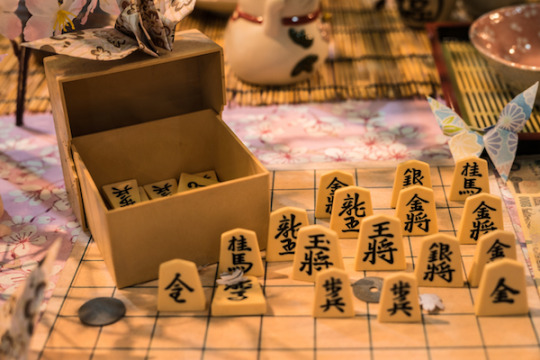
Shogi — often labeled ‘Japanese chess,’ the two games do in fact share many similarities. The goal of shogi is to capture the opponent’s king, with pieces laid out on the square grid board much the same way as in chess. Certain pieces also move in the same ways, but there are also enough significant differences to make the learning process frustrating for any seasoned chess player.
Unlike chess, for example, shogi pieces can be ‘captured’ and make their way back onto the board. They can also be ‘promoted,’ making overall play more fluid. Shogi reflects tactics and strategies of the samurai world, making it a popular game of their time.
10 notes
·
View notes
Text
A Quick Dive Into Shogi (As used in Chapter 17)
Hey, guys! This is a quick thingy I just wanted to post in case anyone was curious: the game of shogi (Japanese chess) is actually really cool! I wanted to link a few articles to you guys in case you wanna know more!
The websites I personally used when writing were:
GameRules: Shogi (used for the description of how the characters actually play) - Gives an idea of how to actually play the game and what pieces there are. A pretty simple layout with a quick paragraph about culture at the end, but a good start.
Choosing A Shogi Board (used for descriptions of things, such as the kind of wood primarily used) - Mainly describes how to buy one and what to look for, but it does have some knowledge in there.
Meanwhile, these were ones I skimmed that go more into the history and culture around it and stuff
Britannica (goes very in-depth about what the pieces can do and how you play)
Shogi.cz (gives a decent overview of the pieces and game, and touches on the history. The site is pretty and organized, as well as having detailed links for how to play, but the writers admit that they don’t know the language. Maybe take with a grain of salt? IDK)
Gambiter: The History Of Shogi (goes deep into the history, as well as touching on variants of shogi and how it’s played professionally/competitively. They also have other games, including several English games but also Sudoku and Mahjong)
Shoji - Japanese Chess (good for novices who want to get better, allegedly, but there’s a lot of detail. Features a cat)
NOTE: I am not Japanese and are unable to confirm if these are reputable sources which accurately portray the game. I attempted to look for good reviews from Japanese people of these sites if I could find them, but be aware that these might not be completely legitimate.
#shogi#crossover#my hero academia#the owl house#wrtco fic#mha#bnha#learning#learning is always good!!!#japanese chess
4 notes
·
View notes
Text
youtube
Susume, Karolina (2018) [3 min] by Mateusz Urbanowicz | Japan
#2D#2D Animation#2018#3 min#Mateusz Urbanowicz#Japan#Animated Short#AnimatedShortOfTheDay#Animation#Anime#Karolina Styczyńska#Shogi#Studio Colorido#Japanese Chess#Youtube
0 notes
Text
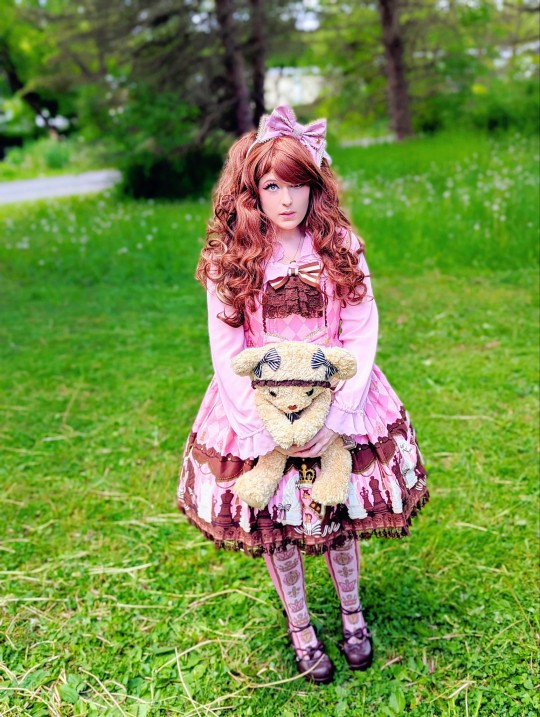



Angelic Pretty
Chess Chocolate
#me#kawaii#kawaii fashion#angelic pretty#lolita fashion#lolita#egl#jfashion#sweet lolita#japanese street fashion#chess chocolate#chocolate print#chocolate lolita#angeleeku#gothic lolita
20 notes
·
View notes
Text
also y'all
does anybody have the original japanese of this line from book 5 ch 27???

bc rereading it i was like. O_O. is he. not talking about vil.
i was thinking like "the first read through you're definitely meant to think so, and vil did absolutely change rook's life, but with context from both book 6 and his halloween vignette, what he's describing here leans more towards the latter" which is like. masterful gaybait i can't even be mad. it's like that post saying "some gaybaiting is like a box propped up with a stick and a block of cheese underneath" except this has all the intricacy of a steampunk clock.
but my VERY shoddy japanese skills r telling me the line translates more to "beauty in your eyes and the darkness, lighting up your entire life for you—in a time in your existence when you'll be able to have [such an experience] (expanding on the prev line where he says they'll be able to understand his ideology in the future)"
^ and i probably mangled this so bad but the main point is i didn't hear him refer to a "someone" like he does in the english tl & i'm wondering if i missed it or if it was in fact added!!!
#txt#how should i tag this to potentially reach ppl who know the answer#twisted wonderland#rook hunt#i was gonna say the sunbeam simile does lean the other way too but iirc he does describe vil as radiant in an earlier scene so that's moot#anyway even if my translation is right you can interpret it as either of the ways i was talking about but it is/would be much more openended#much more cryptic and rookish hahahahaha#japanese is so hard dawg i only had to look up one of the words in this line to understand p much all of them but i still struggled so hard#figuring out what the words meant together😭💔#& inb4 i'm having monolingual struggles i speak mandarin chinese as a second language which Also uses topic-comment structure#i do have way less experience w japanese though & one sentence of modern japanese can feel like a paragraph of mencius to me.#modern mandarin does not do 5d chess with language quite so much
18 notes
·
View notes
Text
four coffees and all i want is sleep
also i spent 50 minutes trying to hunt down a book and discovered its crazy expensive and the nearest library that has it is 290km away
#bean juice why don't you work on me#i did some of the things i was supposed to do but i think its the chess that pushed me to it idk how#also i know the digital library exists but i want it off the screen#mine#coffee#chaotic academia#dark academia#ALSO fuck amazon i canceled my calendar order which they now (after 9 days) claim they lost and they will give me money back#never ordering from that website again idk how americans tolerate it also packages outside??? seems very unsafe#ordered again from the japanese website and the sweet people APOLOGIZED that it will take a week to deliver across half the world#i want to hug them all i should have ordered from there to begin with but i wanted the calendar fast#boy was i wrong
6 notes
·
View notes
Text
i love having multiple skills and random knowledge to bring up casually just because the subject emerged yet you didn't know i knew that
#you never know when you need to say apple juice in german or when you have to embroider your pants or carve wood or perfectly fold paper or#play ukulele or sing in donald ducks voice or crochet a blanket or sew clothes or paint your forniture or write a speech or a funnt note or#an emotional poem to someone you never know when you'll need to hammer a nail or build a bunker bed or fix your own car or beat someone at#chess or swim to save someone from drowning or build a fire or pitch a tent or make someone laugh with movie jokes or literature jokes and#you also never know when you'll need to calculate the strength of a magnetic field or tell a romanian you need to pee or make someone an#origami or cook dinner or bake some cake or pack a lot of stuff in such a small backpack or help a stranger tell the japanese speaking#cashier that they would like to change their last purchased item or when you have to give the fastest direction to a place or when you need#to explain why if i climbed all my way up the leaning tower of pisa and i simultaneously dropped a feather and a pebble they would land at#the same time
3 notes
·
View notes
Text
anyways fuck alpine f1 team all my homies hate alpine f1 team
#i didnt realize they were playing chess with their own drivers#leave those little guys alone!!#they were bonding this weekend!!#esteban ocon#pierre gasly#all pain f1 team#formula 1#japanese gp 2023
9 notes
·
View notes
Text

even Lewis looks surprised 💀😂😂
8 notes
·
View notes
Text
felt like this post/poem was ripe for riffing off of

here's my version, for no reason other than that it made me happy to write it. I'd love to see other people's versions too:
this summer i will read food novels in japanese and birdwatch and get into falconry and learn the 4 swimming strokes and increase my chess rating and edit for money and write a sapphic romance novel and read every work of high literature ever created and watch every movie. but most importantly just chill and relax
#summer#booklr#writeblr#readblr#readlr#writing community#books#chess#swimming#japanese#if youre wondering what a food novel is#there just seem to be a lot of novels centered around cooking and eating in japanese#if this is a specified genre and someone knows about it pls tell me!!
12 notes
·
View notes
Text
Two rivals, both equal intellectually, the villain tests the hero in a game to see who is truly superior, but the game is pin the tail on the donkey instead of chess.
#tropes#subverting tropes#trope talk#trope subversion#writing trope#comedy#swap chess out with go if it’s Japanese
2 notes
·
View notes
Text



❤️Angelic Pretty Chess Chocolate ❤️
#chess chocolate#angelic pretty#kawaii fashion#lolita fashion#kawaii#me#egl#lolita#jfashion#sweet lolita#japanese street fashion#angeleeku
18 notes
·
View notes
